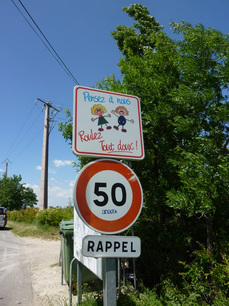
004 Who Wants to be Translated
Tony László
Linguist
 I don't translate my own writing (i.e. "Who Wants to Translate", published April 1, 2011). That doesn't necessarily mean that I would rather turn that work over to someone else. I am the one who most understands what it is I want to express. Someone else, on the contrary, doesn't understand what I want to say. So I tend to squeal every two minutes when I proofread a translated version of my own writing. Typical examples of my squeals are, "What is this?" and, then, "Well . . .it's close".
I don't translate my own writing (i.e. "Who Wants to Translate", published April 1, 2011). That doesn't necessarily mean that I would rather turn that work over to someone else. I am the one who most understands what it is I want to express. Someone else, on the contrary, doesn't understand what I want to say. So I tend to squeal every two minutes when I proofread a translated version of my own writing. Typical examples of my squeals are, "What is this?" and, then, "Well . . .it's close".
Of course, translators try very hard to find the author's message and use words that "most likely match" the original writing. Translators are professionals and don't want the author thinking, "This one doesn't quite get it," or, even worse, to hear the author actually verbalize that. Still, it is quite hard as an author to look at a translator's work from the sidelines and keep quiet, no matter how talented or sensible the translator could be. This is because I am the one who knows the "right answer"
Now, I bet about 300 professional translators screamed all at once, "There is no right answer in translation!" And another 300 must have said "There are multiple right answers". Generally speaking, that's probably the correct interpretation of the work of translation. But we can also say, "There is only one right answer and the author knows it", when we are under a certain condition. That is, when the author is capable of translating. For example, when Japanese writing done by a native English speaker, like me, is translated into English, both the original writing and the translation are both in the author's own voice.
 Let's say that I wrote, "Then, a fly came into the room" in Japanese. How should a "fly" be translated? "Fly"? That's fine if it was only one fly that came in, but if there were two or three flies, it should be flies. But the translator wouldn't know by reading the original copy whether this fly is singular or plural, because in Japanese there is no difference whether singular or not. Only the author with the image of the room and the fly knows the truth. (By the way, there were two. A big one and a little one.)
Let's say that I wrote, "Then, a fly came into the room" in Japanese. How should a "fly" be translated? "Fly"? That's fine if it was only one fly that came in, but if there were two or three flies, it should be flies. But the translator wouldn't know by reading the original copy whether this fly is singular or plural, because in Japanese there is no difference whether singular or not. Only the author with the image of the room and the fly knows the truth. (By the way, there were two. A big one and a little one.)
Then also, there's a question about translating the phrase "came into" of "Then, a fly came into the room". In general, the Japanese term "come in" will be translated as "enter" or "come into" and those translations could work in this example. At the same time, there's a possibility of "fly into" since flies are flying insects. And since they move pretty fast, there are options of "zoom into" and "zip into," and some other ways to express it. So even here, the author already knows how to express the flies' moving at the time he writes the original. On the other hand, the translator could only assume the "right answer" by instinct because one cannot access the author's mind. Poor translators.
So let's pull things together here a little bit. This author, because he knows best about his writing, and can translate it himself but never would, still will not allow others to translate his materials. In another words, this author is a denier of translation, a "translation denier". To translate this in English...? Oh, let's not do that. It would ruin it.
 Tony László, Linguist
Tony László, Linguist
László was raised in the U.S. with Italian and Hungarian heritage. In 1985, he came to Japan and began actively working as a writer. Since 1992, he has managed the "Together Project" (ISSHO), an NGO that researches multicultural co-habitation. He is married to a mangaka (manga author) , Saori Oguri, and is the "darling" of her piece, "My Darling is a Foreigner". László and Oguri have a child. László is known as a language anorak. His books include How to Grow a Happy Tony Flow, Outstretched in Italy - Adventures of Tony & Saori, My Darling is a Foreigner with Baby, etc.
Back Issues
- 2022.7.27 Beyond Disasters - T…
- 2022.6.20 Beyond Disasters - T…
- 2021.6. 7 Contributed Article …
- 2021.4.28 Crossing Borders, En…
- 2021.4.27 Contributed Article …
- 2021.4.20 Contributed Article …
- 2021.3.29 Contributed Article …
- 2020.12.22 Interview with the R…
- 2020.12.21 Interview with the R…
- 2020.11.13 Interview with the R…


